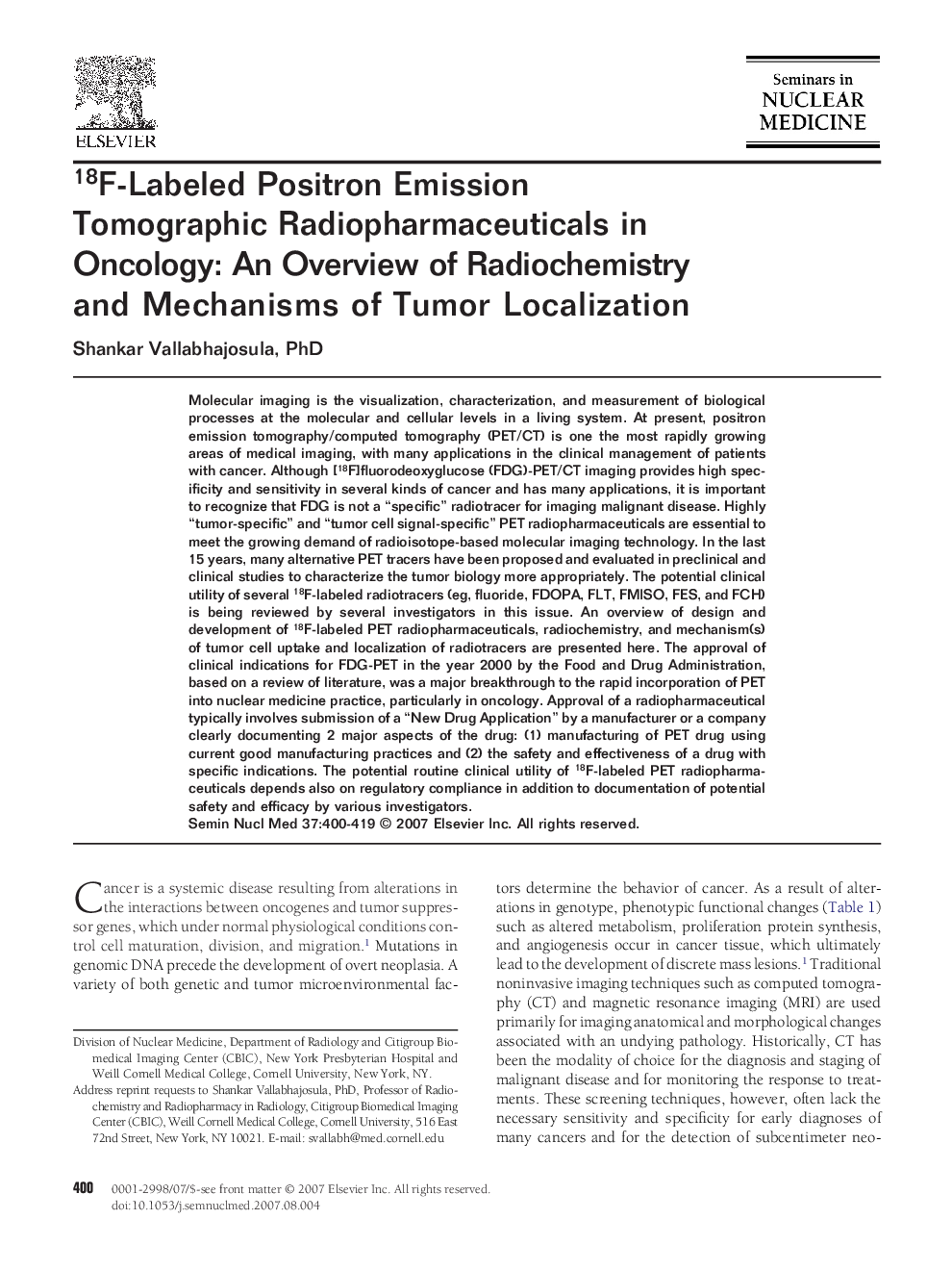| کد مقاله | کد نشریه | سال انتشار | مقاله انگلیسی | نسخه تمام متن |
|---|---|---|---|---|
| 4251270 | 1283977 | 2007 | 20 صفحه PDF | دانلود رایگان |

Molecular imaging is the visualization, characterization, and measurement of biological processes at the molecular and cellular levels in a living system. At present, positron emission tomography/computed tomography (PET/CT) is one the most rapidly growing areas of medical imaging, with many applications in the clinical management of patients with cancer. Although [18F]fluorodeoxyglucose (FDG)-PET/CT imaging provides high specificity and sensitivity in several kinds of cancer and has many applications, it is important to recognize that FDG is not a “specific” radiotracer for imaging malignant disease. Highly “tumor-specific” and “tumor cell signal-specific” PET radiopharmaceuticals are essential to meet the growing demand of radioisotope-based molecular imaging technology. In the last 15 years, many alternative PET tracers have been proposed and evaluated in preclinical and clinical studies to characterize the tumor biology more appropriately. The potential clinical utility of several 18F-labeled radiotracers (eg, fluoride, FDOPA, FLT, FMISO, FES, and FCH) is being reviewed by several investigators in this issue. An overview of design and development of 18F-labeled PET radiopharmaceuticals, radiochemistry, and mechanism(s) of tumor cell uptake and localization of radiotracers are presented here. The approval of clinical indications for FDG-PET in the year 2000 by the Food and Drug Administration, based on a review of literature, was a major breakthrough to the rapid incorporation of PET into nuclear medicine practice, particularly in oncology. Approval of a radiopharmaceutical typically involves submission of a “New Drug Application” by a manufacturer or a company clearly documenting 2 major aspects of the drug: (1) manufacturing of PET drug using current good manufacturing practices and (2) the safety and effectiveness of a drug with specific indications. The potential routine clinical utility of 18F-labeled PET radiopharmaceuticals depends also on regulatory compliance in addition to documentation of potential safety and efficacy by various investigators.
Journal: Seminars in Nuclear Medicine - Volume 37, Issue 6, November 2007, Pages 400–419